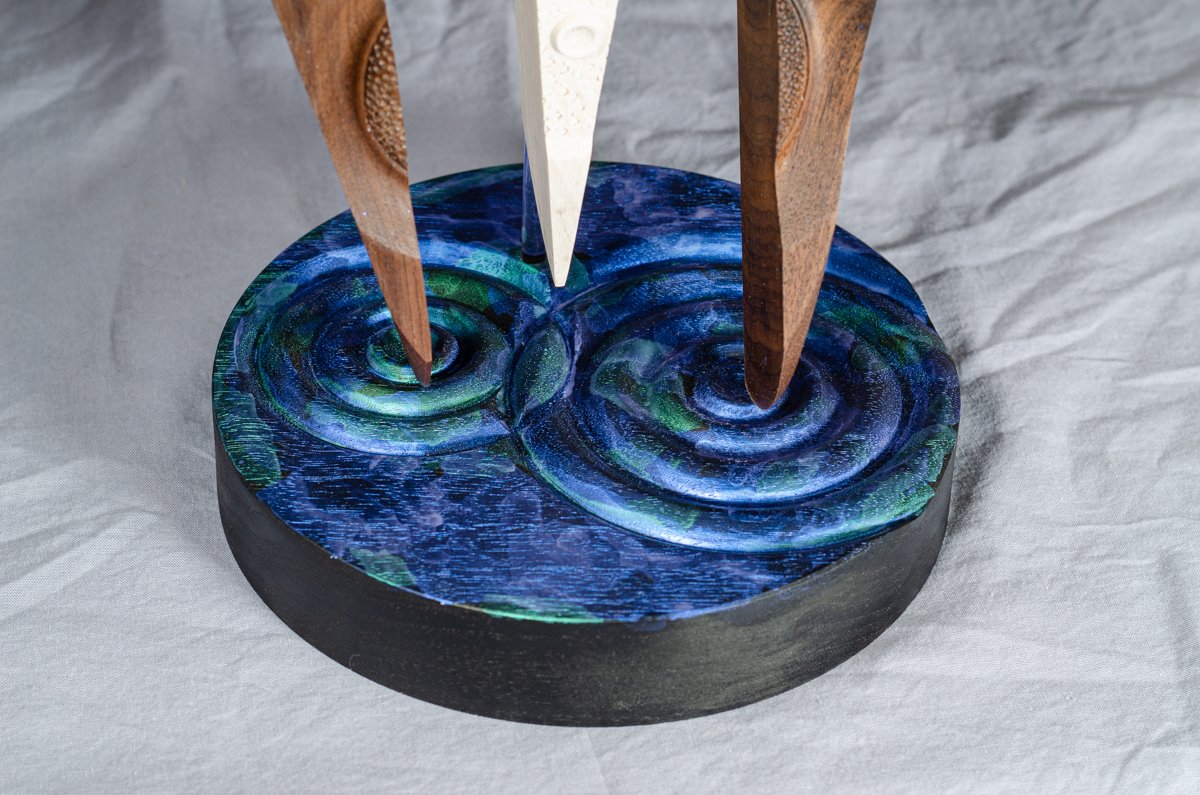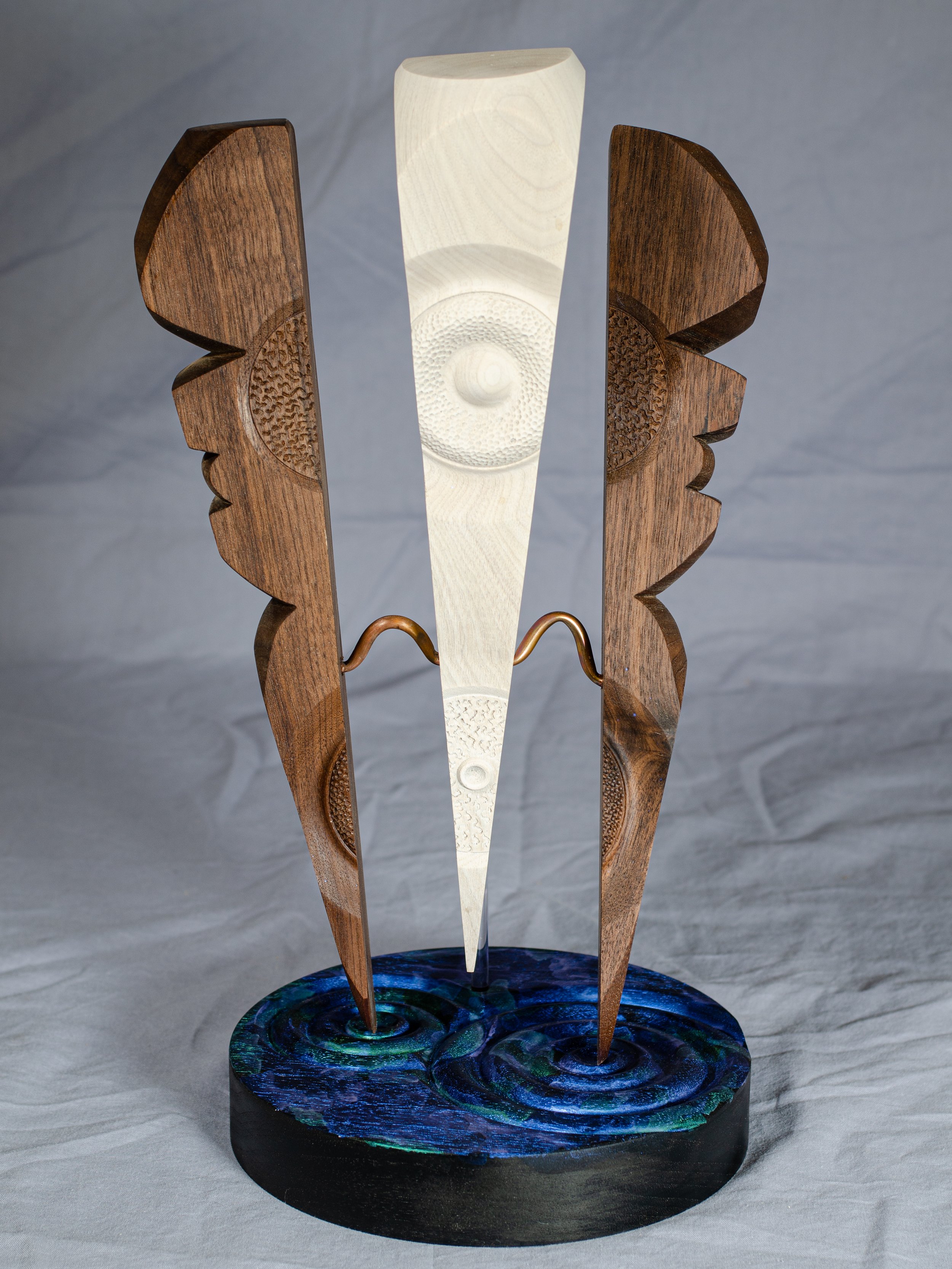 Image 1 of 3
Image 1 of 3

 Image 2 of 3
Image 2 of 3

 Image 3 of 3
Image 3 of 3




I Think She Walks on Water
I Think She Walks on Water is turned from a single piece of walnut. The blank was divided into three equal-size wedges, which were then reassembled using a temporary glue joint. This allowed the piece to be mounted on the lathe and turned in two different orientations. Once turned, the glue joints were disassembled and the piece separated into its three original components.
This technique allows me to play with the orientation and relationship between each of the components. In this presentation, two of the elements are rotated 90 degrees to the center form. The center form is further separated visually by bleaching.
The base or plinth is also walnut, again turned on the lathe, this time on multiple axes to create the appearance of intersecting ripples in the surface of a water body. Interference paints add shimmer to the water.
The entire effect creates a highly dynamic sculpture.
Walnut, copper. 14-1/2” x 8”. Base diameter is 7”.
I Think She Walks on Water is turned from a single piece of walnut. The blank was divided into three equal-size wedges, which were then reassembled using a temporary glue joint. This allowed the piece to be mounted on the lathe and turned in two different orientations. Once turned, the glue joints were disassembled and the piece separated into its three original components.
This technique allows me to play with the orientation and relationship between each of the components. In this presentation, two of the elements are rotated 90 degrees to the center form. The center form is further separated visually by bleaching.
The base or plinth is also walnut, again turned on the lathe, this time on multiple axes to create the appearance of intersecting ripples in the surface of a water body. Interference paints add shimmer to the water.
The entire effect creates a highly dynamic sculpture.
Walnut, copper. 14-1/2” x 8”. Base diameter is 7”.
I Think She Walks on Water is turned from a single piece of walnut. The blank was divided into three equal-size wedges, which were then reassembled using a temporary glue joint. This allowed the piece to be mounted on the lathe and turned in two different orientations. Once turned, the glue joints were disassembled and the piece separated into its three original components.
This technique allows me to play with the orientation and relationship between each of the components. In this presentation, two of the elements are rotated 90 degrees to the center form. The center form is further separated visually by bleaching.
The base or plinth is also walnut, again turned on the lathe, this time on multiple axes to create the appearance of intersecting ripples in the surface of a water body. Interference paints add shimmer to the water.
The entire effect creates a highly dynamic sculpture.
Walnut, copper. 14-1/2” x 8”. Base diameter is 7”.